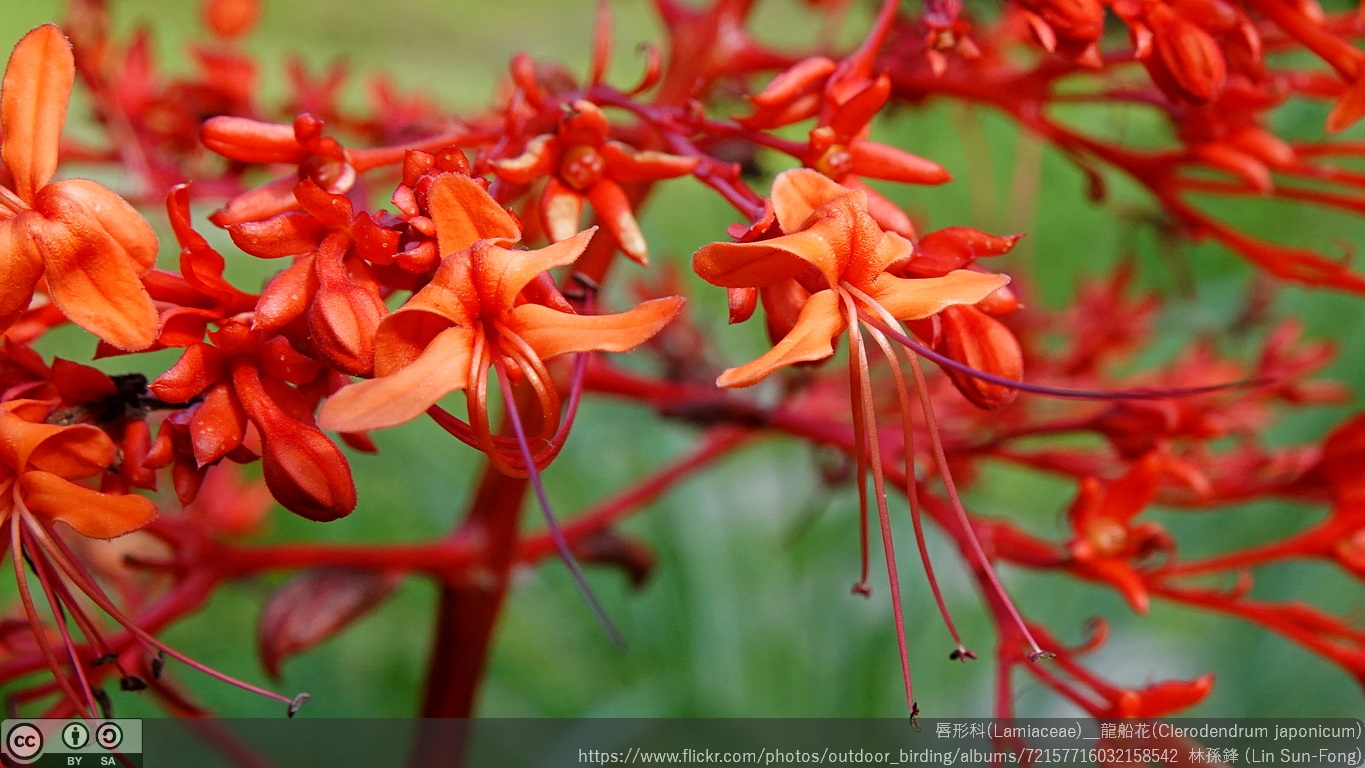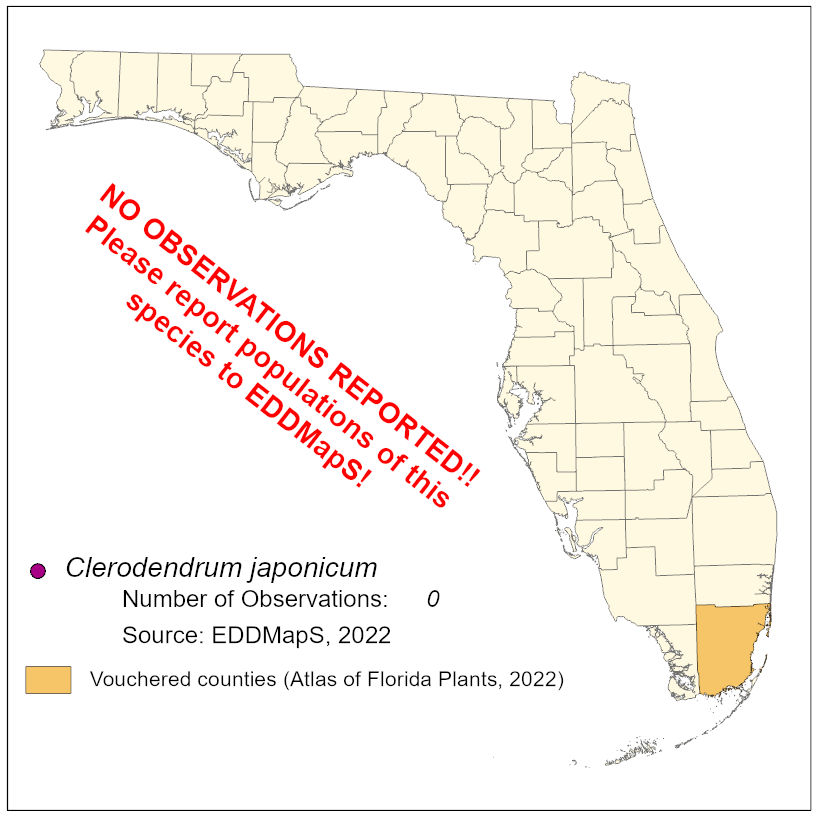Common Name: Japanese glorybower
Family: Lamiaceae
Common Synonyms: Clerodendrum squamatum, Clerodendrum kaempferi, Volkameria kaempferi, Volkameria japonica
USDA Hardiness Zone: 9b-11
Growth Habit: Shrub, Subshrub
Origin: Eastern Asia
FISC Category: -
FDACS Listed Noxious Weed: No
Introduction Date: Earliest Florida specimen vouchered in 1937
IFAS Assessment:

Leaf blades 0.9-1.5 times longer than wide, the base generally cordate to truncate (sometimes narrowed at a broadly obtuse angle). Leaf blade dentate to crenate-dentate (rarely entire), glabrous or puberulent mainly along the veins. Inflorescence spreading to elongate, paniculiform, the flowers relatively spread or in spaced clusters, the pedicels generally discernible. Calyx red, 4-16 mm long, the lobes 2-14 mm long; corolla white or red, the tube ca. 2 cm long, shorter to subequal to the lobes. Blooms late spring to early summer.
Grows in riverbeds in its natural range; has been found in disturbed hammocks in Florida
NA

NA
Dave's Garden. 2022. Clerodendrum Species, Japanese Glory Bower. https://davesgarden.com/guides/pf/go/201664/#b Accessed March 27, 2022
Global Biodiversity Information Facility. 2021. Clerodendrum japonicum (Thunb.) Sweet in GBIF Secretariat. GBIF Backbone Taxonomy. Checklist dataset https://doi.org/10.15468/39omei accessed via GBIF.org on 26 April 2022.
eFloras (2008). Published on the Internet http://www.efloras.org/florataxon.aspx?flora_id=2&taxon_id=200019335 [accessed 27 July 2022] Missouri Botanical Garden, St. Louis, MO & Harvard University Herbaria, Cambridge, MA.